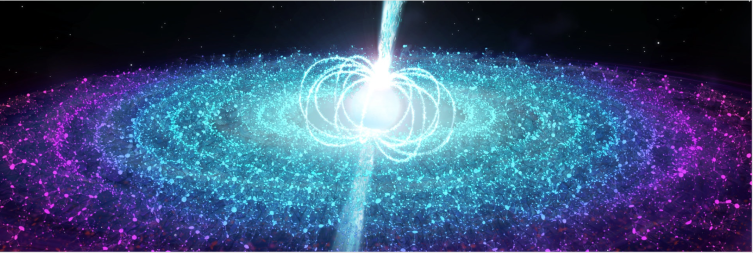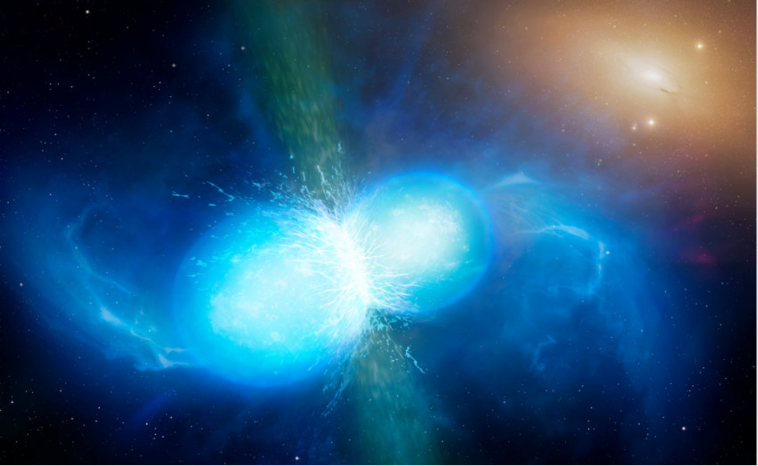Revealing collisions of collapsing suns

When a giant star explodes at the end of its life, it throws its outer layers into space, and what remains of the entire, once powerful star is its core of enormous mass which is almost entirely composed of neutrons. That’s why this remnant is called a neutron star. The material of that sugar cube-sized star here on Earth would weigh several billion tons.
A neutron star is what is left after a supernova explosion. In other words: a giant star explodes and, in that explosion, throws its outer layers into the surrounding space, and the core that remains is a neutron star.
- It is called neutron because it is almost entirely made of neutrons. Its mass is between 1.4 and 3.2 times the mass of the Sun. Or: a typical neutron star has a mass equal to 500,000 Earth masses.
- This much mass is compressed into a very small ball so that a typical neutron star has a diameter of only twenty kilometers.
- So much matter compressed into such a small space has a great mass. A cubic meter of a neutron star on Earth would weigh 200 trillion tons! Or, perhaps more understandable: one cubic millimeter of this star = one million tons.
- High mass means high gravity. To leave the neutron star, you would have to travel at 100,000 kilometers per second, which is one-third the speed of light.
- Many rare metals, including gold, are formed when two neutron stars collide. These are very rare cataclysmic events that also produce gamma ray bursts.
- A newborn neutron star makes several revolutions around its axis in one second. But as it is compressed further, according to the law of conservation of angular momentum, its rotation accelerates and reaches several hundred per second.
- The strong gravity of the neutron star bends the light rays so that the rays from its other, back side also reach us.
Occasionally, two neutron stars collide, a colossal event that reveals their interior to scientists, and which, they say, are key events for understanding the universe. During the approach and merger of two neutron stars, gravitational waves are emitted, followed by a huge explosion that can be seen from all over the Earth as a brief flash. In such collisions, heavy metals are created, which are the material from which the planets are formed.
University of Warwick/Mark Garlick, CC BY 4.0, via Wikimedia Commons
But collisions are rare and short-lived events and their quick location and observation is of extreme importance. That’s why astronomers have organized themselves into a network of observers that reacts to the detection of gravitational signals by three detectors: LIGO, VIRGO and KAGRA.
For this task, the Gravitational Wave Optical Transient observer (GOTO), a special observatory capable of observing the explosions caused by the collisions of these stars, was built in Great Britain. The observatory is set high above the clouds on the volcanic Spanish island of La Palma.
The telescope has an interesting shape reminiscent of rocket launchers. In the short term, it scans the sky as the operator’s goal is to locate the gravitational wave as soon as possible. The stars, planets and galaxies that were recorded the previous night are removed from the captured photos by means of software, so that only a new object remains on the image, i.e. a colliding neutron star.
After that, there are analyzes that will deepen the knowledge of the universe at least a little.

